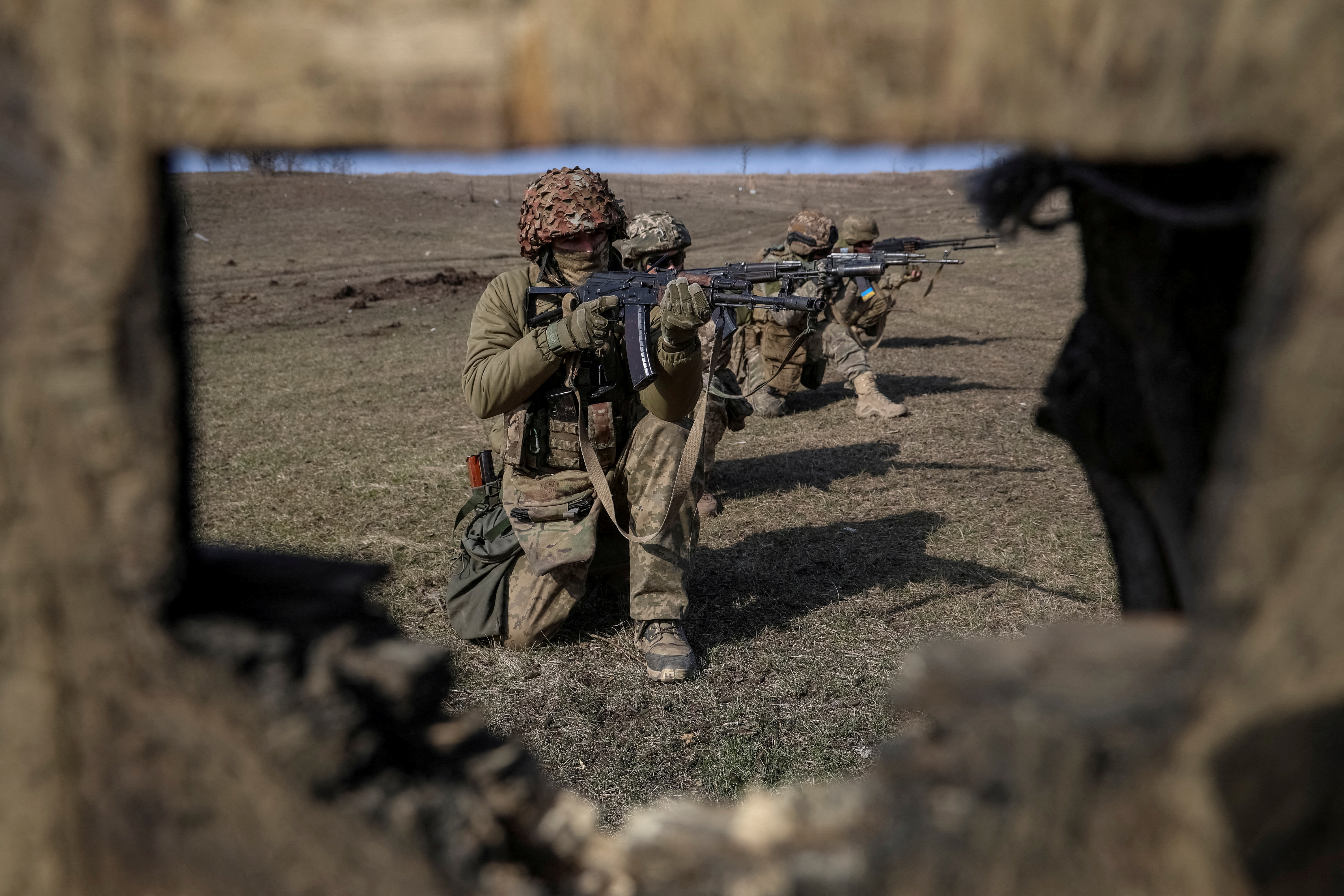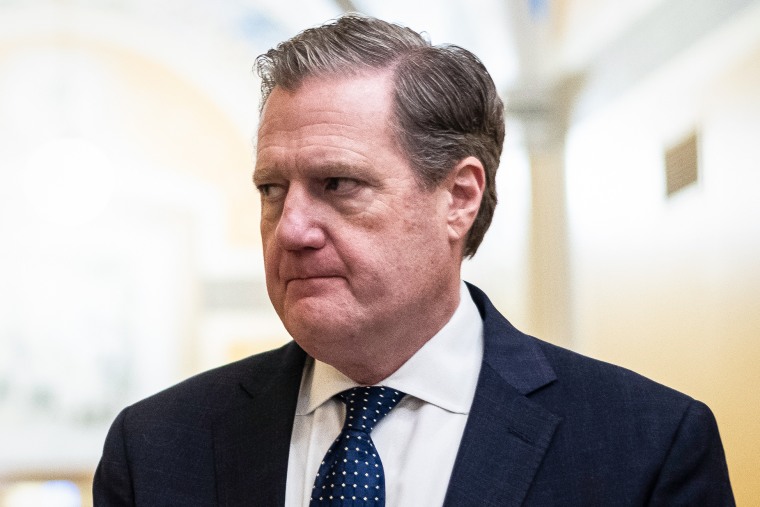One of the fun things in my job, one of the very few, I know which programs these funds are coming from. I also know some great Americans who moved heaven and earth. And their efforts were matched by some great trading partners in our vendors who agreed to expedite these refunds.
This is, at best, a life ring. They need a lifeboat.
Also with the EU going to provide frozen Russian assets worth Euro 2-3 billion this summer to Ukraine, if I was Ukraine I'd scrape up seed money to start getting contracts in place with US & Korean vendors of munitions, especially 155mm ammo.
https://www.reuters.com/business/aer...ls-2024-03-12/
This is, at best, a life ring. They need a lifeboat.
Also with the EU going to provide frozen Russian assets worth Euro 2-3 billion this summer to Ukraine, if I was Ukraine I'd scrape up seed money to start getting contracts in place with US & Korean vendors of munitions, especially 155mm ammo.
https://www.reuters.com/business/aer...ls-2024-03-12/
US preparing new weapons package for Ukraine, officials say
By Mike Stone, Idrees Ali and Patricia Zengerle
March 12, 20241:10 PM EDT

Item 1 of 2 Ukrainian servicemen of 79th brigade take part in training, amid Russia's attack on Ukraine, in Donetsk region, Ukraine March 4, 2024. REUTERS/Oleksandr Ratushniak/File Photo
WASHINGTON, March 12 (Reuters) - The United States is preparing a new military aid package for Ukraine that could be worth as much as $400 million, two U.S. officials told Reuters on Tuesday, the first such move in months as additional funds for Kyiv remain blocked by Republican leaders in Congress.
The officials, speaking on condition of anonymity, said an announcement was expected later on Tuesday.
One of the officials said that the funding for this package is from credits refunded to the Pentagon for recent purchases and is expected to contain artillery.
The U.S. Army, in particular, has been making huge purchases of munitions and vehicles to replenish stocks sent to Ukraine.
The last drawdown was in December 2023 when funds to replenish stocks fell to zero.
The White House has been scrambling to find ways to send more military assistance given the situation on the battlefield and the resistance to the funding from Republican hardliners.
U.S. officials have also looked at options for seizing some $285 billion in Russian assets immobilized in 2022 and using the money to pay for Ukraine weaponry.
The announcement is set to come as Poland’s president and prime minister meets President Joe Biden at the White House later on Tuesday to talk about ways to bolster support for Ukraine.
The new weapons package was first reported by Reuters earlier on Tuesday.
Using the funds that have been returned to replenish stocks opens a narrow window to urgently allow more aid to be sent from existing stocks as the Biden administration waits for supplemental funding to be passed by lawmakers.
Biden, a Democrat, has backed military aid to Ukraine since Russia's full-scale invasion in 2022, while his likely Republican opponent in the Nov. 5 U.S. election, former president Donald Trump, has a more isolationist stance.
Republican House of Representatives Speaker Mike Johnson, an ally of Trump, has so far refused to call a vote on a bill that would provide $60 billion more for Ukraine.
The measure has passed the Democratic-run Senate, and both Republicans and Democrats in the House say it would pass if the chamber's Republican leaders allowed a vote.
Leaders of U.S. intelligence agencies urgently pressed members of the House of Representatives on Tuesday to approve additional military assistance for Ukraine, saying it would not only boost Kyiv as it fights Russia but discourage Chinese aggression.
Ukraine President Volodymyr Zelenskiy said on Monday that the situation along the front of the country's war with Russia was the best in three months, with Moscow's troops no longer advancing after their capture last month of the eastern city of Avdiivka.
Zelenskiy, in an interview with France's BFM television, said Ukraine had improved its strategic position despite shortages of weaponry, but suggested the situation could change again if new supplies were not forthcoming.
He said earlier that Russia is preparing a new offensive against Ukraine starting in late May or summer. Zelenskiy has said 31,000 Ukrainian soldiers have been killed since February 2022.
Russia's capture of Avdiivka gave the Kremlin's forces breathing room in defending the Russian-held regional center of Donetsk, 20 kilometres (12 miles) to the east.
Earlier this month, a top military commander said that Ukrainian troops were forced to leave several settlements neighboring Avdiivka due to Russia's continued offensive amid its own depleting stockpiles of munitions.
Denmark will provide a new military aid package including Caesar artillery systems and ammunition to Ukraine worth around 2.3 billion Danish crowns ($336.6 million), the Danish Defence Ministry said in a statement on Tuesday.
European Union countries are set to agree on a new 5 billion-euro ($5.46 billion) top-up to a fund used to finance military shipments to Ukraine, the Financial Times reported on Tuesday, citing four officials briefed on the discussions.
By Mike Stone, Idrees Ali and Patricia Zengerle
March 12, 20241:10 PM EDT

Item 1 of 2 Ukrainian servicemen of 79th brigade take part in training, amid Russia's attack on Ukraine, in Donetsk region, Ukraine March 4, 2024. REUTERS/Oleksandr Ratushniak/File Photo
WASHINGTON, March 12 (Reuters) - The United States is preparing a new military aid package for Ukraine that could be worth as much as $400 million, two U.S. officials told Reuters on Tuesday, the first such move in months as additional funds for Kyiv remain blocked by Republican leaders in Congress.
The officials, speaking on condition of anonymity, said an announcement was expected later on Tuesday.
One of the officials said that the funding for this package is from credits refunded to the Pentagon for recent purchases and is expected to contain artillery.
The U.S. Army, in particular, has been making huge purchases of munitions and vehicles to replenish stocks sent to Ukraine.
The last drawdown was in December 2023 when funds to replenish stocks fell to zero.
The White House has been scrambling to find ways to send more military assistance given the situation on the battlefield and the resistance to the funding from Republican hardliners.
U.S. officials have also looked at options for seizing some $285 billion in Russian assets immobilized in 2022 and using the money to pay for Ukraine weaponry.
The announcement is set to come as Poland’s president and prime minister meets President Joe Biden at the White House later on Tuesday to talk about ways to bolster support for Ukraine.
The new weapons package was first reported by Reuters earlier on Tuesday.
Using the funds that have been returned to replenish stocks opens a narrow window to urgently allow more aid to be sent from existing stocks as the Biden administration waits for supplemental funding to be passed by lawmakers.
Biden, a Democrat, has backed military aid to Ukraine since Russia's full-scale invasion in 2022, while his likely Republican opponent in the Nov. 5 U.S. election, former president Donald Trump, has a more isolationist stance.
Republican House of Representatives Speaker Mike Johnson, an ally of Trump, has so far refused to call a vote on a bill that would provide $60 billion more for Ukraine.
The measure has passed the Democratic-run Senate, and both Republicans and Democrats in the House say it would pass if the chamber's Republican leaders allowed a vote.
Leaders of U.S. intelligence agencies urgently pressed members of the House of Representatives on Tuesday to approve additional military assistance for Ukraine, saying it would not only boost Kyiv as it fights Russia but discourage Chinese aggression.
Ukraine President Volodymyr Zelenskiy said on Monday that the situation along the front of the country's war with Russia was the best in three months, with Moscow's troops no longer advancing after their capture last month of the eastern city of Avdiivka.
Zelenskiy, in an interview with France's BFM television, said Ukraine had improved its strategic position despite shortages of weaponry, but suggested the situation could change again if new supplies were not forthcoming.
He said earlier that Russia is preparing a new offensive against Ukraine starting in late May or summer. Zelenskiy has said 31,000 Ukrainian soldiers have been killed since February 2022.
Russia's capture of Avdiivka gave the Kremlin's forces breathing room in defending the Russian-held regional center of Donetsk, 20 kilometres (12 miles) to the east.
Earlier this month, a top military commander said that Ukrainian troops were forced to leave several settlements neighboring Avdiivka due to Russia's continued offensive amid its own depleting stockpiles of munitions.
Denmark will provide a new military aid package including Caesar artillery systems and ammunition to Ukraine worth around 2.3 billion Danish crowns ($336.6 million), the Danish Defence Ministry said in a statement on Tuesday.
European Union countries are set to agree on a new 5 billion-euro ($5.46 billion) top-up to a fund used to finance military shipments to Ukraine, the Financial Times reported on Tuesday, citing four officials briefed on the discussions.

:quality(70)/cloudfront-us-east-1.images.arcpublishing.com/archetype/CYJEDRRQ4JCGLKUT7UBIM2B2LY.jpg) A Boeing-Saab Ground-Launched Small Diameter Bomb is fired during a test at Andoya Test Center in Norway. (Courtesy of Boeing and Saab)
A Boeing-Saab Ground-Launched Small Diameter Bomb is fired during a test at Andoya Test Center in Norway. (Courtesy of Boeing and Saab)

:quality(70)/cloudfront-us-east-1.images.arcpublishing.com/archetype/GCBDTGXRT5D67PH2KVOAUW4CDY.jpg) German soldiers fire a Patriot weapons system in Chania, Greece, on Nov. 8, 2017. (Sebastian Apel/U.S. Defense Department via AP)Amid a significant use of missiles in Ukraine and the Middle East, customers are ramping up independent production of some of the weapons the Patriot air defense system can launch at an unprecedented scale.
German soldiers fire a Patriot weapons system in Chania, Greece, on Nov. 8, 2017. (Sebastian Apel/U.S. Defense Department via AP)Amid a significant use of missiles in Ukraine and the Middle East, customers are ramping up independent production of some of the weapons the Patriot air defense system can launch at an unprecedented scale.:quality(70)/cloudfront-us-east-1.images.arcpublishing.com/archetype/4PFTVWZHA5FQPNNJKF7FUDTALQ.jpg) The Patriot Advanced Capability-3 Missile Segment Enhancement weapon broke its own distant record to take out an air-breathing target simulating a cruise missile or fixed-wing aircraft, during a U.S. Army-led test at White Sands Missile Range, N.M. (Courtesy of Lockheed Martin)
The Patriot Advanced Capability-3 Missile Segment Enhancement weapon broke its own distant record to take out an air-breathing target simulating a cruise missile or fixed-wing aircraft, during a U.S. Army-led test at White Sands Missile Range, N.M. (Courtesy of Lockheed Martin):quality(70)/cloudfront-us-east-1.images.arcpublishing.com/archetype/WCD4DVQVINFD3NXHFMQAZHWMVE.jpg) L3Harris Technologies in July 2023 acquired Aerojet Rocketdyne, which produces rocket engines for main-stage, upper-stage and in-space propulsion. (Aerojet Rocketdyne)
L3Harris Technologies in July 2023 acquired Aerojet Rocketdyne, which produces rocket engines for main-stage, upper-stage and in-space propulsion. (Aerojet Rocketdyne):quality(70)/cloudfront-us-east-1.images.arcpublishing.com/archetype/VL6XK33ABJC4JF3EWVQACCMN6M.jpg) U.S. Patriot missile batteries stand ready in Poland on April 10, 2022. (Sgt. 1st Class Christopher Smith/U.S. Army)In the dead of night in May, Russia launched a Kinzhal hypersonic missile at the
U.S. Patriot missile batteries stand ready in Poland on April 10, 2022. (Sgt. 1st Class Christopher Smith/U.S. Army)In the dead of night in May, Russia launched a Kinzhal hypersonic missile at the :quality(70)/cloudfront-us-east-1.images.arcpublishing.com/archetype/D3BWJG2IPZFQHE3CJW23YG56QA.jpg) A Russian Air Force MiG-31K jet carries the high-precision hypersonic missile Kh-47M2 Kinzhal during the Victory Day military parade. (Pavel Golovkin/AP)
A Russian Air Force MiG-31K jet carries the high-precision hypersonic missile Kh-47M2 Kinzhal during the Victory Day military parade. (Pavel Golovkin/AP):quality(70)/cloudfront-us-east-1.images.arcpublishing.com/archetype/HL3DJCIKLZAMBFVYSXL7SD2XR4.jpg) A U.S. Army Patriot missile fires to engage a target at the Shoalwater Bay Training Area in Queensland, Australia, during the 2021 Talisman Sabre exercise. (Cpl. Jarrod McAneney/Australian Defence Department)
A U.S. Army Patriot missile fires to engage a target at the Shoalwater Bay Training Area in Queensland, Australia, during the 2021 Talisman Sabre exercise. (Cpl. Jarrod McAneney/Australian Defence Department):quality(70)/cloudfront-us-east-1.images.arcpublishing.com/archetype/5KXDVOH6VBAMNC5IHEEVFC3SXA.jpg) The Lower Tier Air and Missile Defense Sensor, shown here, is slated to replace the Patriot system’s radar. (Darrell Ames/U.S. Army)
The Lower Tier Air and Missile Defense Sensor, shown here, is slated to replace the Patriot system’s radar. (Darrell Ames/U.S. Army):quality(70)/cloudfront-us-east-1.images.arcpublishing.com/archetype/3B647YJIMRGPVKI6EEV2HHOHAI.jpg) A Romanian Patriot system fires a missile during a drill at the Capu Midia shooting range next to the Black Sea on Nov. 15, 2023. (Daniel Mihailescu/AFP via Getty Images)
A Romanian Patriot system fires a missile during a drill at the Capu Midia shooting range next to the Black Sea on Nov. 15, 2023. (Daniel Mihailescu/AFP via Getty Images):quality(70)/cloudfront-us-east-1.images.arcpublishing.com/archetype/GJUG44S2MMYHSS3THFFEUSLEPB.jpg) In its fiscal 2025 budget request to Congress, the Army asked for $602 million in research and development efforts for Integrated Air and Missile Defense and $2.8 billion in procurement, which covers modernized capabilities beyond the Patriot system. (Andrew Harnik/AP)
In its fiscal 2025 budget request to Congress, the Army asked for $602 million in research and development efforts for Integrated Air and Missile Defense and $2.8 billion in procurement, which covers modernized capabilities beyond the Patriot system. (Andrew Harnik/AP)


Comment